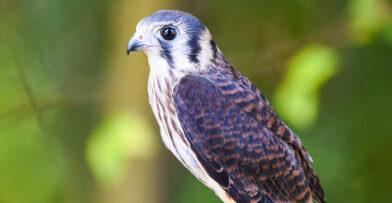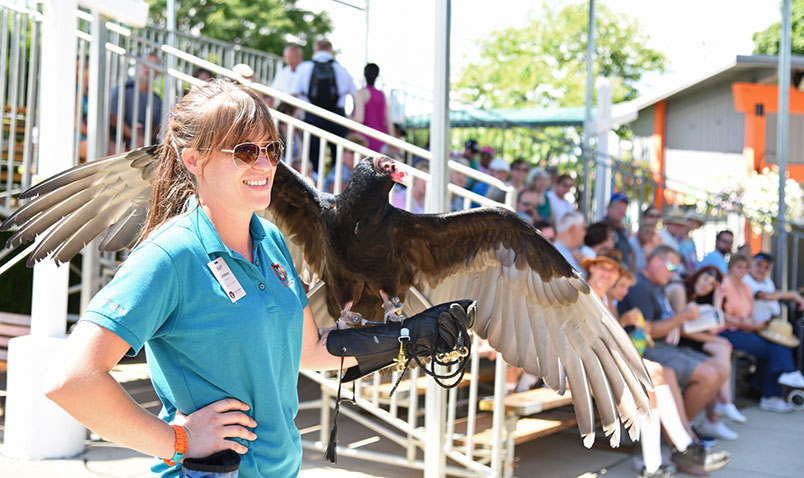
American Kestrels
Gracing the skies of grasslands and prairies, American Kestrels (Falco sparverius) are North America’s smallest… Read Story >

Schlitz Audubon’s Raptor Program educates the public about raptor ecology, conservation, and these birds’ important roles in the ecosystem. Our premier collection emphasizes raptors: hawks, owls, eagles, and falcons, but also includes a Turkey Vulture and an American Crow. Each of our resident birds is not releasable to the wild and is in our permanent care. These feathered ambassadors are dedicated to providing information about their wild relatives, habitat concerns, and issues facing raptors today. Visit the calendar on our website to learn how you can see our amazing birds!
These powerful and graceful birds, each with their own story, make an enormous impact, providing a true connection and appreciation for all wildlife and the habitat we share. Each of our live demonstrations provides an unparalleled experience designed to enthrall audiences of all ages.
Raptors are the largest birds in North America. Some birds of prey are migratory, and others are year-round residents of the Midwest. With a keen eye, in the Milwaukee area, you can see a multitude of owls, hawks, falcons, and Turkey Vultures in the wild. Raptors are strong apex predators that can be seen everywhere: in your backyard, or along trails while on a hike. Depending on the season, Bald Eagles, Ospreys, Broad-winged Hawks, and other birds of prey can be found perching or flying throughout greater Milwaukee. Our Raptor Program offers the opportunity to see and experience these birds up close.
As predators, raptors are susceptible to the environmental factors that affect their prey animals. Birds of prey can provide a litmus for the health of rodents, amphibians, fish, and other birds. If the health of a raptor species appears to be in decline, as an apex predator, this can be a signal that something else has gone awry with plant or animal communities in the food chain or the greater ecosystem. A healthy raptor population suggests that the surrounding ecosystem is in good health. In Wisconsin, it was birds of prey that made apparent the dangers of the insecticide DDT, leading to the discontinuation of the widespread use of this chemical. The health of the ecosystem has, in turn, become healthier for all creatures, humans included.
Combined, our birds participate in 350 educational programs every year. These educational locations include classrooms, libraries, museums, and outdoor events like Wisconsin State Fair. The birds are trained with positive reinforcement techniques based on trust developed between each bird and individual staff members and volunteers. Birds teach about habitat loss, adaptations, ecosystem health, and many other topics. To learn about having a raptor participate in an education program at your school, business, or social function, please contact our registrar at registration@schlitzaudubon.org.